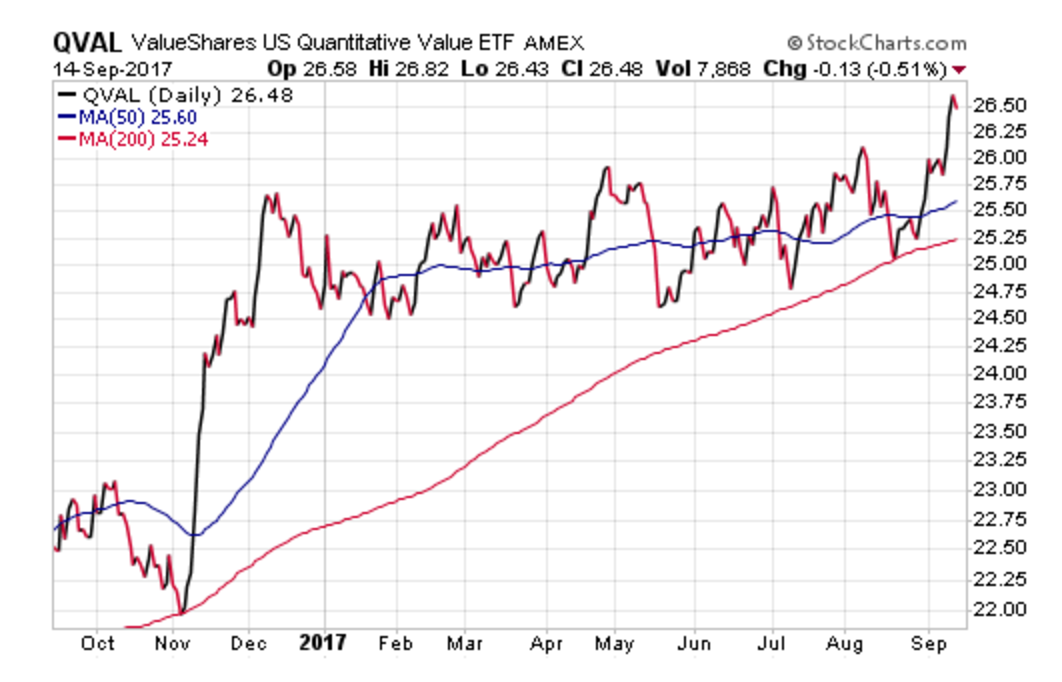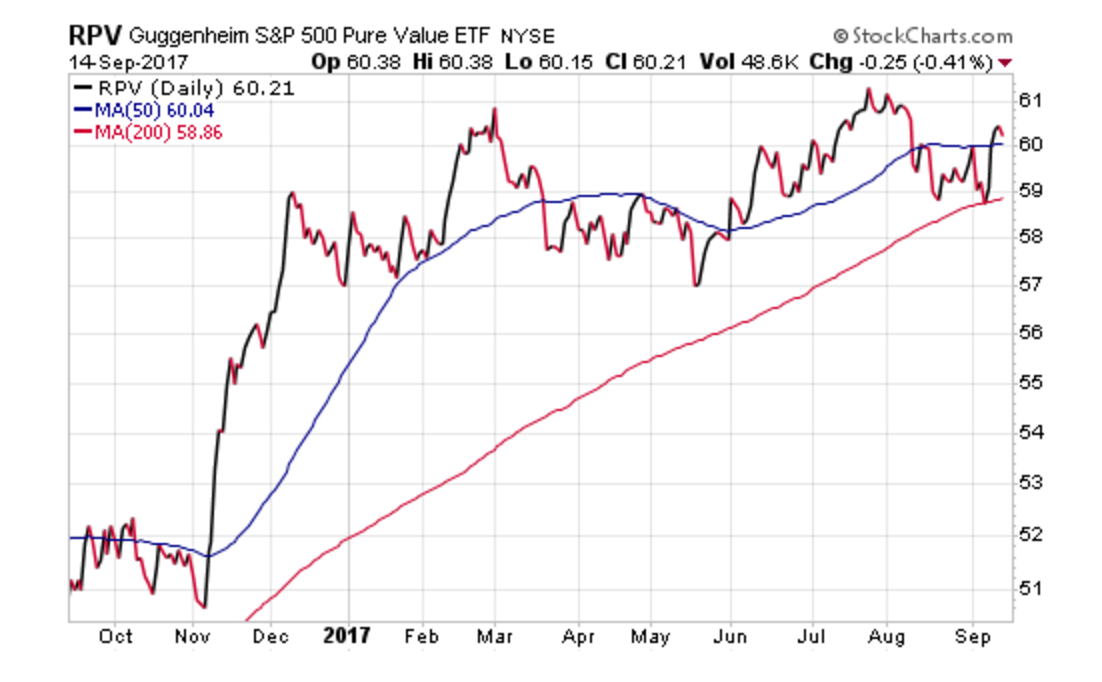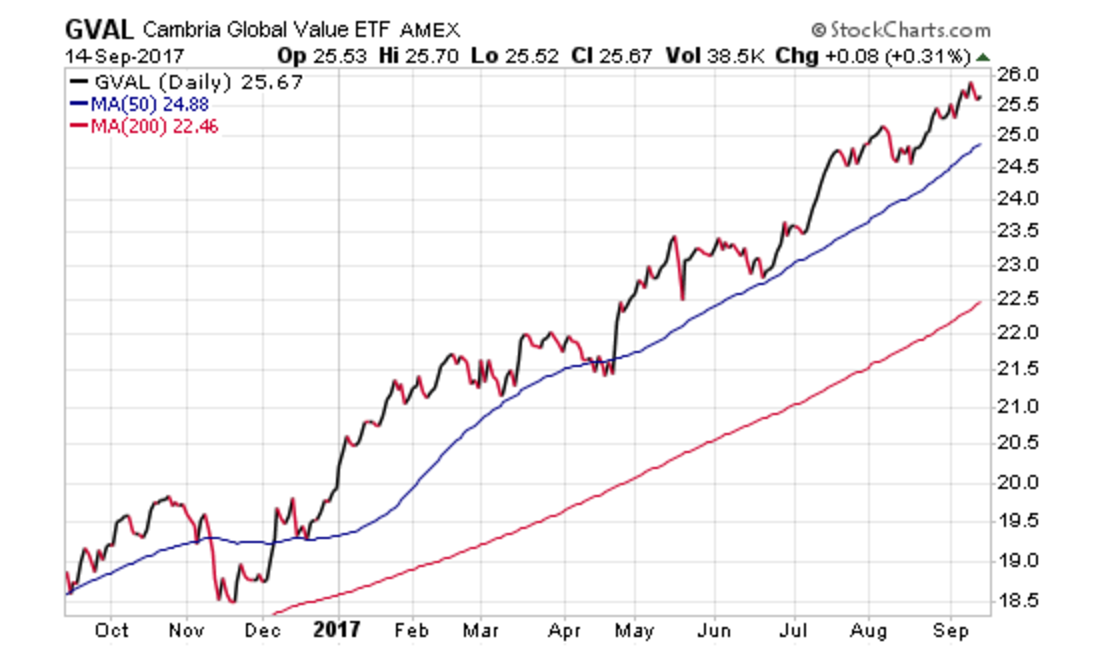Classifying stocks as either growth or value is one of the oldest and most studied fundamental investment pillars. This process traditionally involves the analysis of various balance sheet statistics to determine a company’s intrinsic net worth relative to its peers and historical benchmarks, says David Fabian, editor of FMD Capital Management.
Get Top Pros' Top Picks, MoneyShow’s free investing newsletter »
Being that “value” is such a sought-after characteristic, it’s no surprise that over 50 exchange-traded funds are dedicated to the pursuit.
Value purists may scoff at the larger and more diversified of these funds in favor of deeper analysis and a smaller pool of stocks with the capability to show off what this factor is all about. Fortunately, there are several ETFs that bring the true spirit of value investing back to its roots.
Advertisement
ValueShares U.S. Quantitative Value ETF (QVAL) is the flagship fund of Alpha Architect, an independent ETF sponsor created by Wesley Gray PhD and Jack Vogel PhD.
Both gentlemen have forgotten more about fundamental value characteristics than I will ever be able to remember. As such, they are a perfect team to construct a quantitatively driven portfolio of stocks by identifying attractive fundamental criteria.
QVAL is an index-based ETF with just 40 holdings that are roughly equal weighted in the portfolio structure. This allows for each stock to have a similar contribution to the total return of the fund rather than giving larger companies the lion’s share of the assets.
To be included in the QVAL portfolio, stocks must meet forensic accounting, valuation, and quality screens to ensure minimum requirements are met. Well-known holdings include: General Motors (GM), Lear (LEA), and Target (TGT).
This ETF is on the eve of celebrating its third birthday and charges an expense ratio of 0.79% for ongoing management of the strategy. It’s also notable that QVAL shares a similar philosophy with its foreign stock equivalent in the ValueShares International Quantitative Value ETF (IVAL) as well.
Guggenheim S&P 500 Pure Value ETF (RPV)
Any fund with the phrase “pure value” in its title is tailor-made for this list. RPV is an index-based ETF that owns around 100 value stocks culled from the broader S&P 500 Index.
What makes this fund unique is that it puts a more stringent valuation screen to the broader universe to rule out blended or ambiguous style approaches.
Another feature of the RPV portfolio is that it weights holdings according to the highest value scores. This creates a stronger influence of larger and more stable companies such as Berkshire Hathaway (BRK.B) and Centene (CNC).
RPV has been in existence for over a decade now and has accumulated nearly $900 million in assets. The fund also charges a very reasonable expense ratio of 0.35%.
This type of fund may appeal to value enthusiasts as either a core holding or a tactical position to strategically target fundamental criteria. This same overarching theme is available in both small and mid-cap flavors as well via the Guggenheim S&P Smallcap 600 Pure Value ETF (RZV) and Guggenheim S&P Midcap 400 Pure Value ETF (RFV).
Cambria Global Value ETF (GVAL)
GVAL is a far different type of index fund, with a high degree of emphasis on foreign holdings. The fund has quickly grown to one of the largest in the Cambria stable by selecting stocks showing strong value characteristics across a universe of 45 countries. This includes both developed and emerging market exposure to provide a truly global exposure profile.
The fund currently holds just over 140 stocks with a high degree of concentration in Austria, Portugal, Russia, and Greece according to the recent fact sheet. This list is loaded with countries that experienced difficult periods in recent years and have recently become popular with the strong trend in emerging market equities.
The GVAL screening criteria is such that it will often weight out-of-favor stocks with attractive fundamentals given the expectation of stronger future returns.
This can potentially lead to above-average volatility, but also a unique return profile that may fit well as a slice of international stock exposure. GVAL carries an expense ratio of 0.69% and pays quarterly dividends to its shareholders.
Subscribe to david Fabian's Flexible Growth and Income Report here…
























